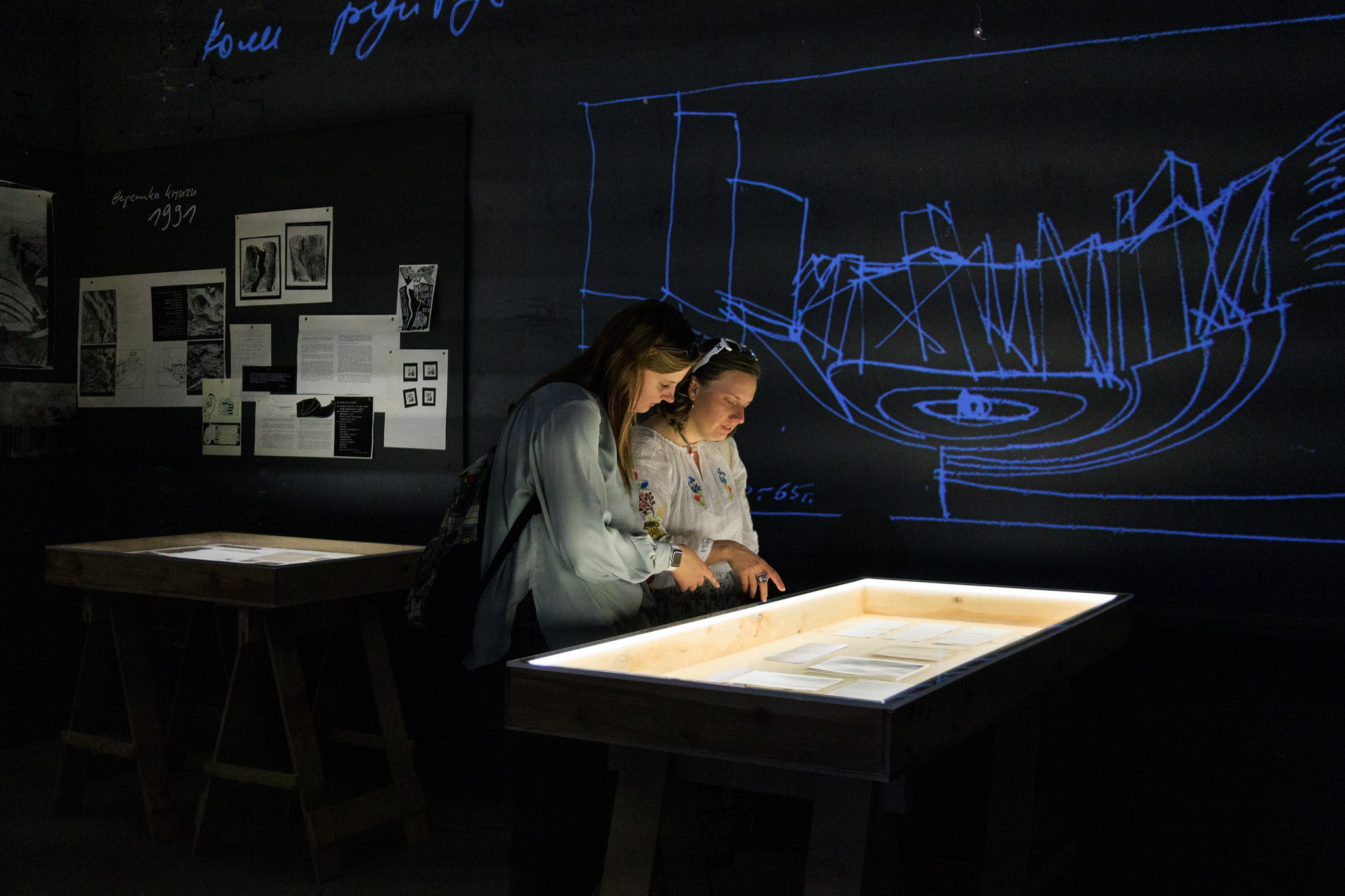As part of the ongoing documentary exhibition project “When the World Falls Apart,” the Living Memory Exhibition Center at the Babyn Yar National Historical and Memorial Reserve hosted a powerful event that combined historical testimony with artistic reflection on the tragedy of Babyn Yar.
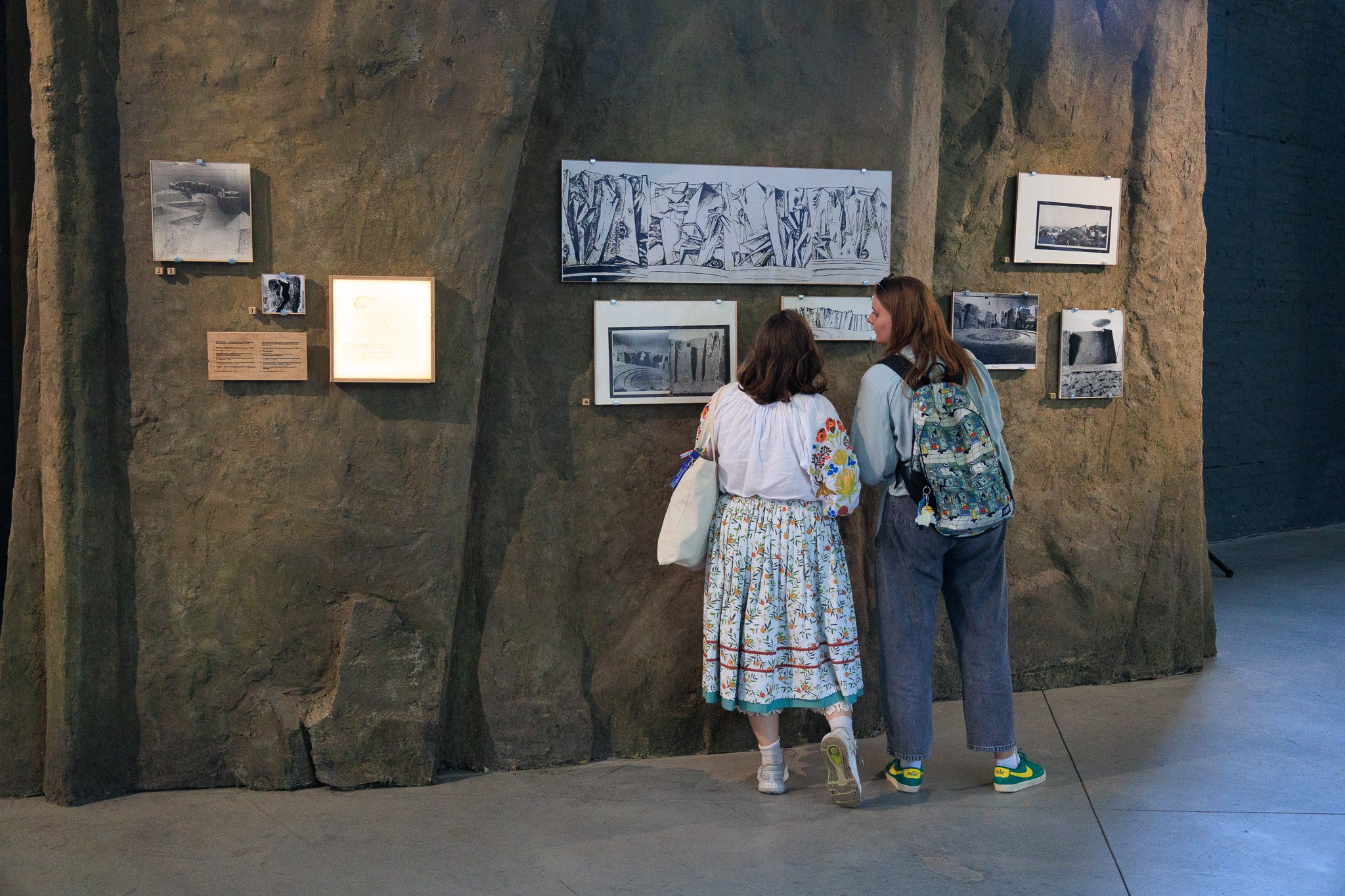
Vitalii Azhnov, actor of the Ivan Franko National Academic Drama Theater, read excerpts from the requiem book To Memory by Ada Rybachuk and Volodymyr Melnichenko (ARVM), offering a poetic and personal lens on the memorial project that was never realized.
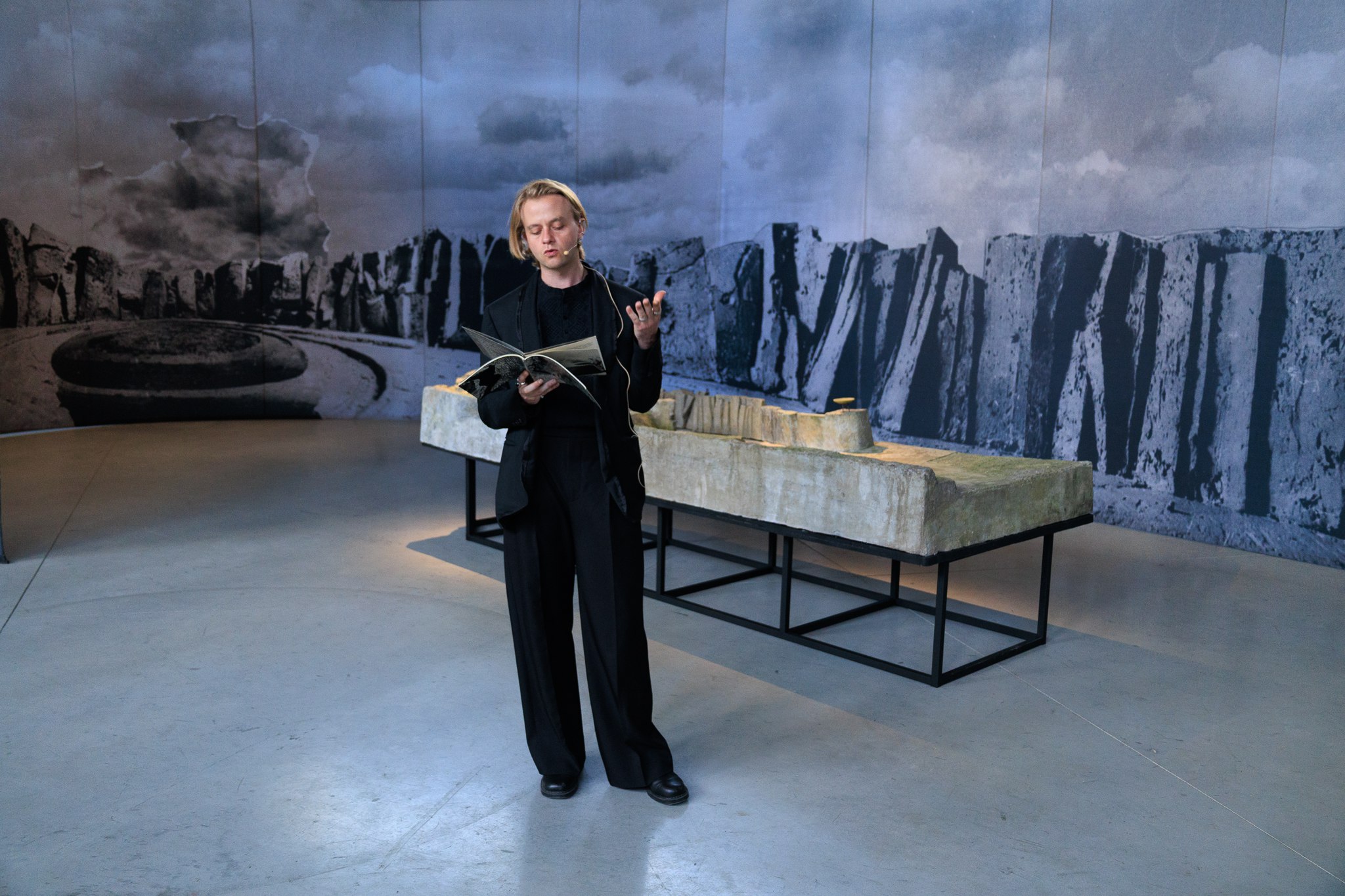
A central moment of the event was the presentation of a rare film chronicle from Babyn Yar, shot in 1966 and preserved against KGB restrictions by cinematographer Eduard Timlin. This digitized archival footage has now been officially transferred to the Babyn Yar National Reserve Archive.
The event was held within the program of the exhibition dedicated to the unrealized memorial project created by ARVM for a 1965 architectural competition. Though their concept was deeply rooted in humanism and artistic integrity, it conflicted with Soviet narratives and was ultimately suppressed. The competition itself was canceled by authorities after the submission of designs.
As part of the event, the public reading of To Memory evoked the emotional resonance of 1966, a year that witnessed growing civic efforts to honor the victims of the Babyn Yar massacre — efforts the Soviet regime attempted to silence.
“One of our strategic tasks is to dismantle the myths created by Soviet power around the history of Babyn Yar. That is why we launched the exhibition ‘When the World Falls Apart’ — to return ARVM’s vision to the public sphere, a vision that was censored for not aligning with the official Soviet rhetoric,”
said Roza Tapanova, Director of the Reserve.
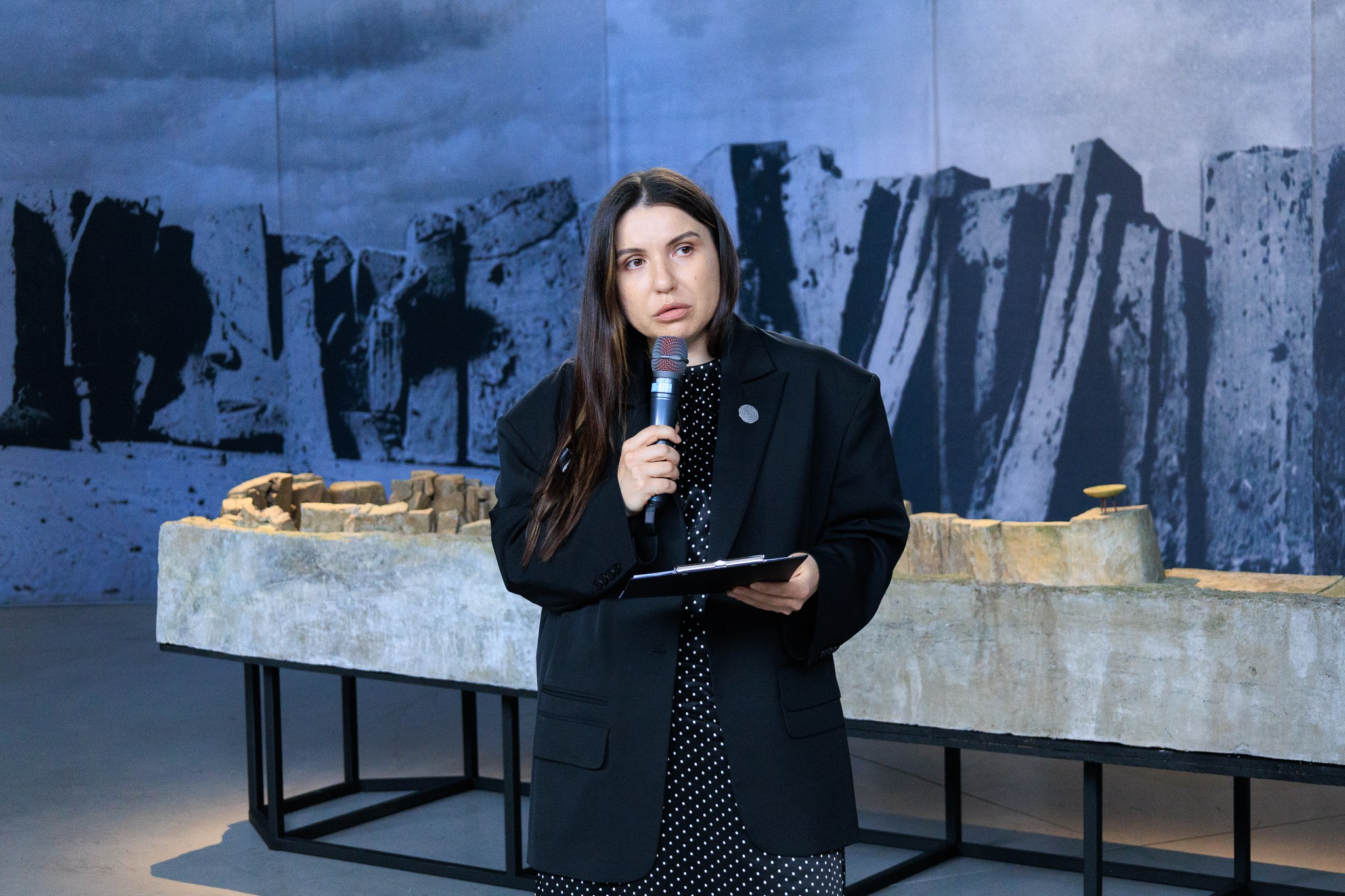
Published in 1991, To Memory commemorates the 50th anniversary of the tragedy and includes materials related to the memorial project, as well as recollections of 1966 — a year marked by unofficial gatherings that attempted to honor the victims in defiance of state restrictions.
“This text was meant to be heard — here, at Babyn Yar. It restores the voice of those who were forced into silence,”
added Tapanova.
Following the reading, the audience viewed archival video footage shot on the eve of the September 29, 1966, gathering, capturing a deeply symbolic moment when activists placed the first informal memorial sign at the site of the massacre.
Oleksiy Radynski, the documentary filmmaker who curated the segment, explained:
“For years, these frames were thought lost. But Eduard Timlin preserved them. During the perestroika period, they were mistakenly believed to depict the mass gathering on September 29 itself — which created confusion about its scale and significance. Thanks to our collaboration with Mr. Timlin, we were able to reconstruct the truth behind this unique cinematic document of its time.”
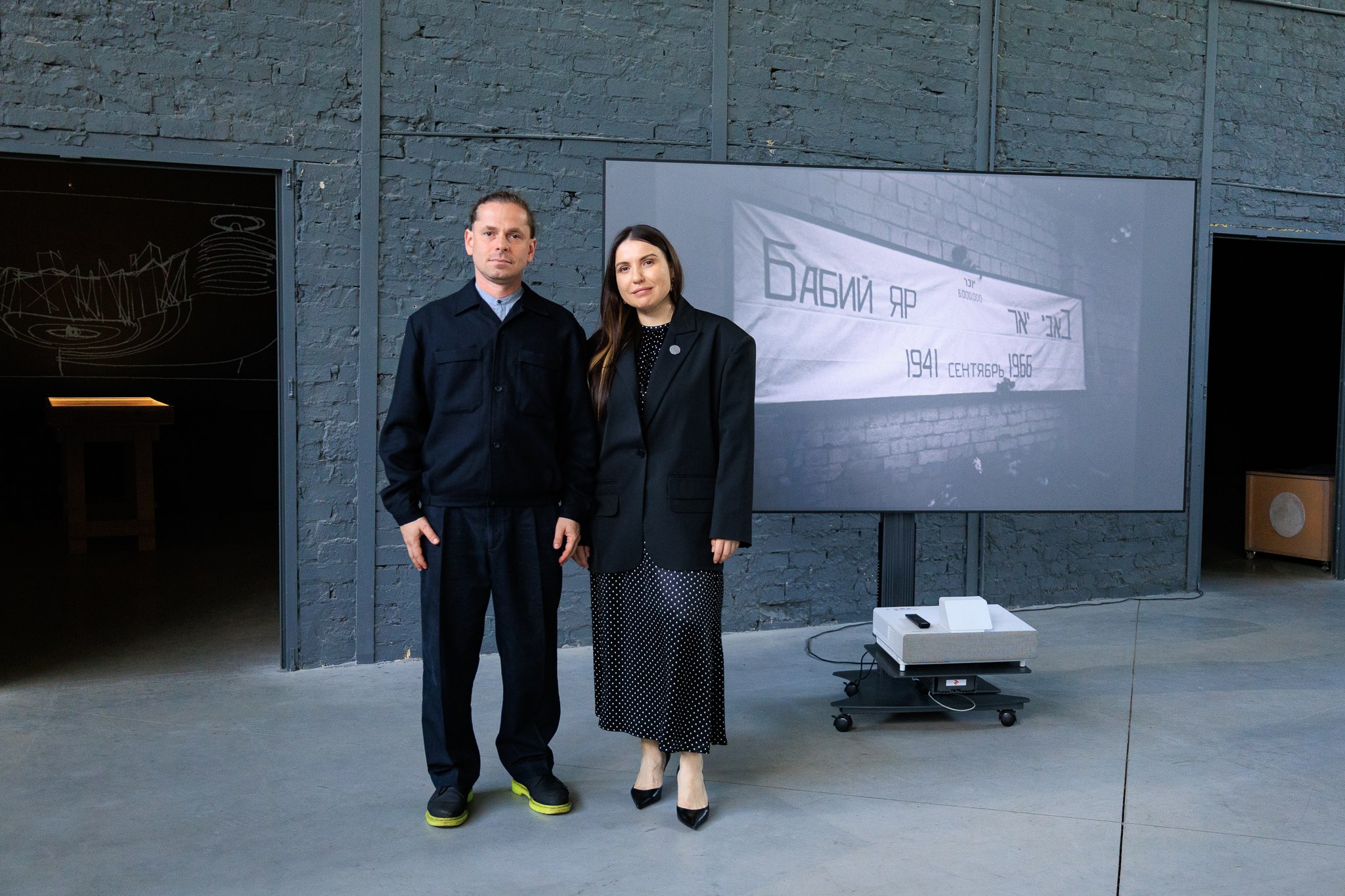
The footage, now preserved in 4K resolution, was digitized by Eduard Timlin himself using a personal archival technology he developed.
“This video helps set the record straight. It’s a document of resistance. And we are grateful to everyone who helps keep this memory alive,”
concluded Rosa Tapanova.
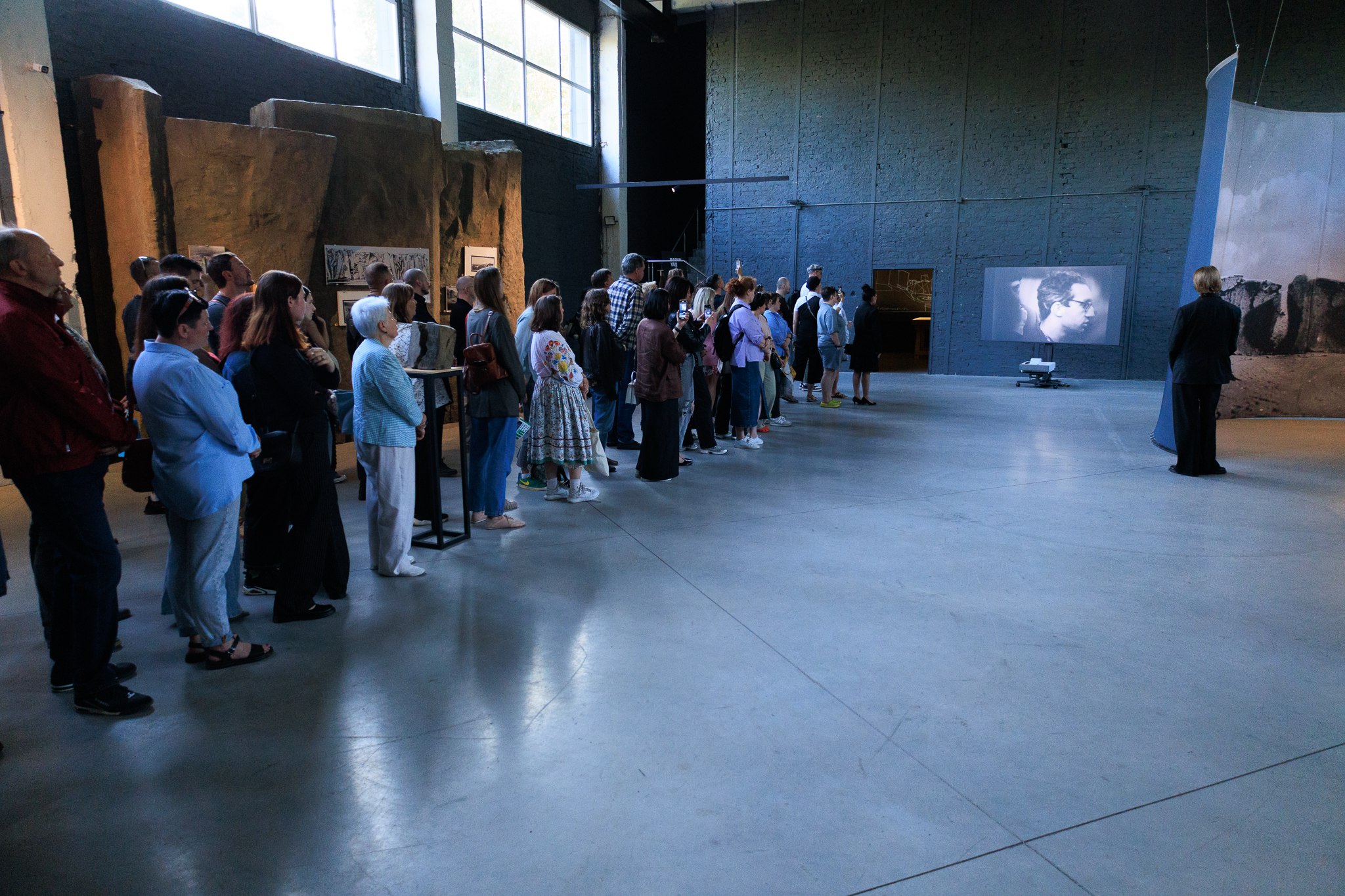
Exhibition Info
When the World Falls Apart
Address: Living Memory Exhibition Center, 46A Yuriy Illienko Street, Kyiv
Dates: May 29 – July 31, 2025
Opening hours:
Mon–Fri: 10:00 AM – 7:00 PM
Sat–Sun: 11:00 AM – 7:00 PM
Admission: Free
